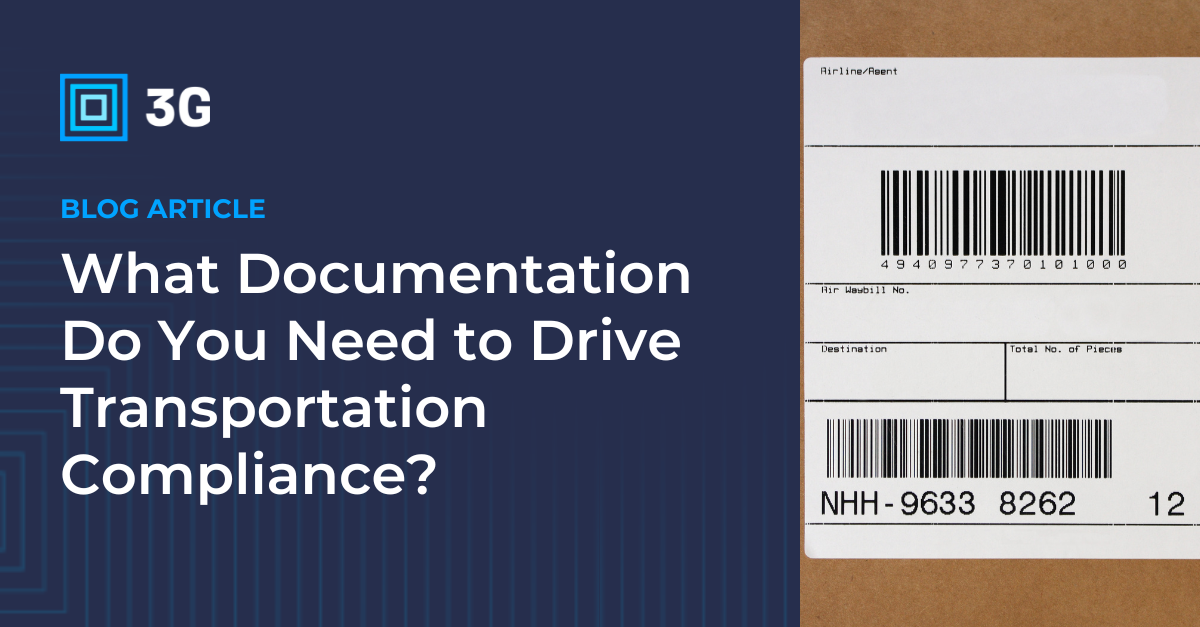For shippers, failing to provide accurate shipping documentation can lead to significant penalties, charge-backs, lost revenue, and compliance risks.
Transportation is bursting with regulatory bodies and exciting acronyms: the FMCSA (Federal Motor Carrier Safety Administration), the FRA (Federal Railroad Administration), and the NHTSA (National Highway Traffic Safety Administration), just to name a few in the U.S. alone.
Shippers play a crucial role in maintaining transportation compliance by organizing and managing essential shipping-related documents.
Effective compliance in transportation hinges on meticulous management of essential documents — specifically, deploying a system and software that aids accuracy and organization to prevent mishaps, fines, and even loss of licensing.
Key Shipping Documents for Transportation Compliance
Shippers are responsible for a range of documents that ensure safe and lawful transport. Here’s a guide to the key documentation requirements:
Shipment Documentation
These documents for transportation compliance pertain to the various details of the contents of your shipments and agreements with your partners.
- Shipping Label: Provides critical shipping details such as the sender and receiver addresses, carrier information, tracking number, and any special handling instructions to facilitate the delivery process.
- Bill of Lading (BOL): A legal contract between the shipper and carrier outlining the details of the shipment, including contents, weight, and destination.
- Packing List: A document detailing the shipment’s contents, critical for customs and ensuring accurate inventory tracking.
- GS1 Label: A standardized label that conveys essential product and shipment information, ensuring traceability, accurate identification, and compliance with retail shipping requirements.
Regulatory and Compliance Documents
Documentation in this category ensures your shipments adhere to regulatory standards, particularly for international shipments.
- Commercial Invoice: Documents the transaction between shipper and customer.
- Export/Import Paperwork: For cross-border shipping, permits are necessary to comply with local laws and global trade regulations.
- Hazardous Materials Documentation (if applicable): Requires proper labeling and regulatory permits, including manifests and safety data sheets.
Safety and Risk Management Documentation
These kinds of documents for transportation compliance act as proof that your shipments meet various safety requirements.
- Packaging Compliance Documentation: Ensures that packaging meets legal requirements for product safety, especially for fragile or hazardous materials.
- Insurance Certificates: Proof of coverage to protect shipments from damage, loss, or other risks.
- Inspection Reports: If necessary, inspections of shipments must be recorded to verify they meet quality and safety standards.
Overcoming Documentation Challenges for Shippers
Shippers face unique challenges in handling transportation documentation efficiently. A modern transportation software solution can help by digitizing, organizing, and automating key processes:
- Managing Document Volume: The amount of paperwork required for shipping compliance can be overwhelming. Software systems help centralize records, reducing the risk of lost documents or missed deadlines.
- Organizing Documents: Shippers have to know not only what documents they need for compliance but also when they need them.
- Reducing Errors: Manual data entry leads to mistakes that can be costly. Digitized documentation processes with automated checks ensure accuracy and mitigate risks.
- Preventing Delays: Delays in processing documentation can slow down shipments. Transportation software integrates with other systems to speed up paperwork, ensuring shipping processes run smoothly.
It’s possible to minimize these risks by automating workflows to generate the appropriate documentation for different types of shipments. This automation creates more accurate records, which get flagged less often. Companies have saved tens of thousands of dollars in retailer fees by reducing these kinds of errors.
Simplify Your Compliance Process With 3G
Proper documentation is the cornerstone of compliance in the transportation industry. Being able to produce the required documentation for different shipment types is essential for avoiding fees, ensuring safety, and maintaining efficiency.
But the first step to always having the right document at the right time for transportation compliance is identifying potential issues in your workflow. Consider evaluating your current documentation process to find areas for improvement or opportunities for automation.
Want to see how the 3G Transportation Software Suite can simplify your compliance documentation? Schedule a demo today to learn more.








